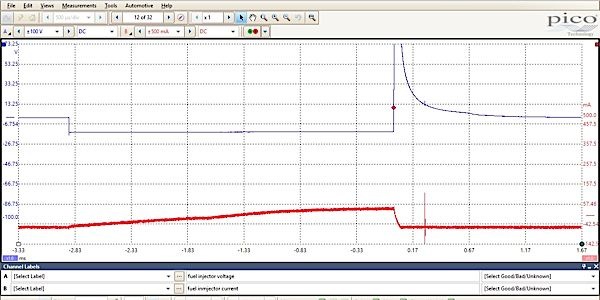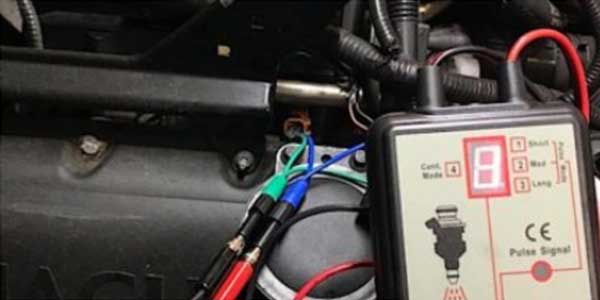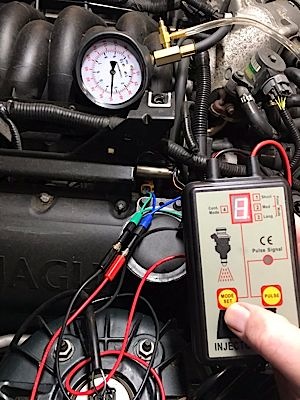If a fuel injector is not operating within set parameters, it can cause driveability symptoms and codes that can point to components other then a faltering fuel injector.
Balance Testing
On some vehicles, it is possible to perform a cylinder balance test with a scan tool. This test disables a fuel injector to see if it changes idle quality or misfires if the throttle is snapped. This can be effective if a fuel injector is not firing or is clogged.
Trying to do this test by pulling the connector for an injector can give mixed results because the engine control module will sense the change in the circuit and possible adjust timing or change other parameters that could give you a false positive for the test.
Another test involves pulsing an individual injector with a special tool for a set number of pulses and measuring the drop in fuel pressure at the rail. The test requires starting with the same amount of fuel pressure at each injector. If one injector does not match the results from the other injectors, you know something is wrong with that injector. If too much pressure is lost, you know it is leaking or not sealing. If the injector dropped less pressure than the rest, it could be clogged or damaged internally.
Balance testing is not an exact science. These tests do not test the circuit driving the injector or the coil inside the injector.
 Circuit Testing
Circuit Testing
An injector has only one moving part. An electromagnetic coil moves a pintle in a chamber that has pressurized fuel on one side and a nozzle on the other.
As the coil is saturated by energy, the pintle moves upwards against a spring. This allows fuel to be injected into the engine.
Most injectors use 12 volts to energize the coil, and the driver energizes the circuit by pulling it to ground. When the injector is energized, the voltage drops to almost zero. If it does not, it could mean an open or weak connection in the wiring harness or open coils inside the injector.
When the voltage is turned off, the needle starts to close. When it closes, it generates a voltage spike known as the inductive kick. This is a generated magnetic field collapsing in the coils. This spike can range from 50 to 100 volts. Some circuits use a diode to cap the voltages seen at the driver to prevent damage. These diodes will dump the voltage to ground if they reach a specific range. This may cause the peak to be cut off on the waveform when viewed on a slower scope.
On the backside of the inductive kick, you may see a small positive hump or bump. This is the pintle hitting the seat of the injector and closing. This is a very powerful diagnostic insight.
Some injectors have a very noticeable pintle closing waveform while others may only have a small change in the waveform. Check known-good waveforms for the engine before condemning the injector. Also, perform a snap throttle test to see the waveform lengthen as the driver increases the injector pulse width.
Current
The current waveform of a fuel injector is a ramp that shows the coil becoming saturated with the current. The current ramp starts to go up as soon as the voltage is applied by the driver.
The ramp can be split into two parts. The first part is where the injector is closed while the coil has yet to build up enough electromotive force needed to counteract the spring on the back of the pintle.
The second part of the ramp is when there is enough current in the coil, the needle moves. This event can be seen as a small rise in the slope. Where it appears on the slope is debatable. Many variables like injector specifications, fuel pressure and other factors can change the position of the event on the waveform. However, some scopes might not be fast enough to catch it.
Diagnostics
Diagnosing a saturated switch fuel injection circuit with a scope can help you to confirm the health of the drivers and injectors. You can compare the waveforms to other injectors on the vehicle or to a known-good waveform found online or in the service information.
On their own, a balance, current and voltage testing can confirm that the internals of the injector is moving. Combined, they can give a complete picture of the health of the system from the driver in the control module to the pintel’s tip.
Article courtesy Underhood Service.















